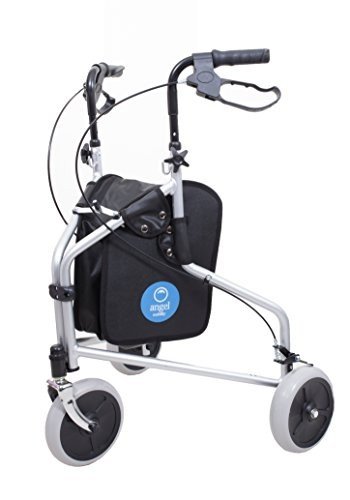A Comprehensive Guide to Buying a Mobility Scooter
Mobility scooters have ended up being an essential tool for many people seeking to improve their self-reliance and mobility. With a huge array of designs and features available, choosing the best mobility scooter can be intimidating. This short article supplies a helpful guide to help consumers browse their alternatives, assess their needs, and make a notified purchase.
Comprehending Mobility Scooters
Mobility scooters are electric automobiles designed for individuals who experience mobility obstacles. They are especially beneficial for seniors, those with specials needs, or people recovering from injuries. Mobility scooters can differ commonly in terms of style, functions, and pricing.
Types of Mobility Scooters
Before embarking on a purchase, it's necessary to comprehend the different types of mobility scooters readily available:
Three-Wheel Scooters:
- Generally more maneuverable in tight areas
- Lightweight and portable
- Suitable for indoor use
Four-Wheel Scooters:
- Offer greater stability and balance
- Ideal for outside use over different terrains
- Typically have a longer battery life
Foldable/Portable Scooters:
- Designed to be easily transported and kept
- Can often suit the trunk of a cars and truck
- Ideal for those who take a trip often
Heavy-Duty Scooters:
- Built to accommodate bigger people
- Frequently featured more robust functions for outside usage
- Normally geared up with bigger batteries for extended range
Factors to Consider When Buying a Mobility Scooter
1. Weight Capacity
Select a mobility scooter that can support the user's weight. The majority of scooters have a weight limitation varying from 250 to 500 pounds. It is essential to ensure that the scooter can accommodate the user conveniently.
2. Variety and Battery Life
The range is how far the mobility scooter can travel on a single charge. Common ranges vary between 10 to 30 miles. Think about the user's everyday activities and pick a scooter with a suitable range.
3. Scooter Dimensions
Think about the size of the scooter, including its weight and measurements. new mobility scooters might be ideal for narrow corridors and tight spaces, while larger designs provide additional stability and comfort.
4. Surface Capability
Evaluate where the scooter will primarily be utilized. If the user prepares to travel mainly on pavement, a lightweight design may be adequate. However, if the user needs to pass through gravel or irregular surface areas, consider a four-wheel scooter developed for off-road use.
Leading Features to Look For
Comfort
- Adjustable Seats: Look for scooters with cushioned and height-adjustable seats to guarantee comfort during travel.
- Armrests: These improve security and support while navigating.
Security and Visibility
- Headlights and Taillights: Essential for nighttime usage.
- Turn Signals and Reflectors: Improve visibility and security while on the roadway.
User-Friendly Controls
- Joystick or Drive Controls: These ought to be user-friendly and easy to control.
- Easy-to-Read Displays: A control board that reveals battery life, speed, and distance can boost the user experience.
Extra Features
- Storage Compartments: These use added convenience for carrying individual items while on the go.
- Weather Protection: Consider designs with rain covers or windshields if utilized in variable weather.
Cost Considerations
When budgeting for a mobility scooter, costs can range anywhere from ₤ 500 to over ₤ 5,000 depending upon the design, features, and brand name. Additional expenses might include:
- Extended Warranty: Protects versus problems and can save cash in the long run.
- Accessories: Optional functions, such as updated seats, lights, or storage options.
| Feature | Cost Range |
|---|---|
| Standard Models | ₤ 500 - ₤ 1,500 |
| Mid-Range Models | ₤ 1,500 - ₤ 3,000 |
| High-End Models | ₤ 3,000 - ₤ 5,000 |
Financing Options
Many merchants use financing strategies, and some city government efforts may provide grants or help for those in requirement. Examine possible financial support with neighborhood resources or mobility service organizations.
Frequently asked questions about Buying a Mobility Scooter
What is the difference between a mobility scooter and a wheelchair?
Mobility scooters are motorized and permit users to navigate separately, while wheelchairs might need physical help or manual operation.
How do I keep a mobility scooter?
Regular maintenance includes examining battery life, cleaning up the scooter, and checking tires and brakes. Constantly refer to the user handbook for particular guidelines.
Can mobility scooters be utilized indoors?
Yes, numerous designs are created for both indoor and outside use. Nevertheless, three-wheel scooters tend to be much better fit for indoor navigation due to their tighter turning radius.
Are mobility scooters covered by insurance coverage?
Some insurance coverage plans cover a portion of the costs for mobility scooters if they are considered medically essential. Contact your provider for specific details.
How quickly can a mobility scooter go?
The majority of mobility scooters have an optimal speed varying from 4 to 8 mph. Nevertheless, the proper pace may vary depending on local regulations.
Acquiring a mobility scooter can considerably boost one's self-reliance and lifestyle. By understanding the types, functions, and costs connected with mobility scooters, prospective purchasers can make educated choices that suit their requirements and choices. Customization and thorough research are key to guaranteeing complete satisfaction with this important financial investment.

